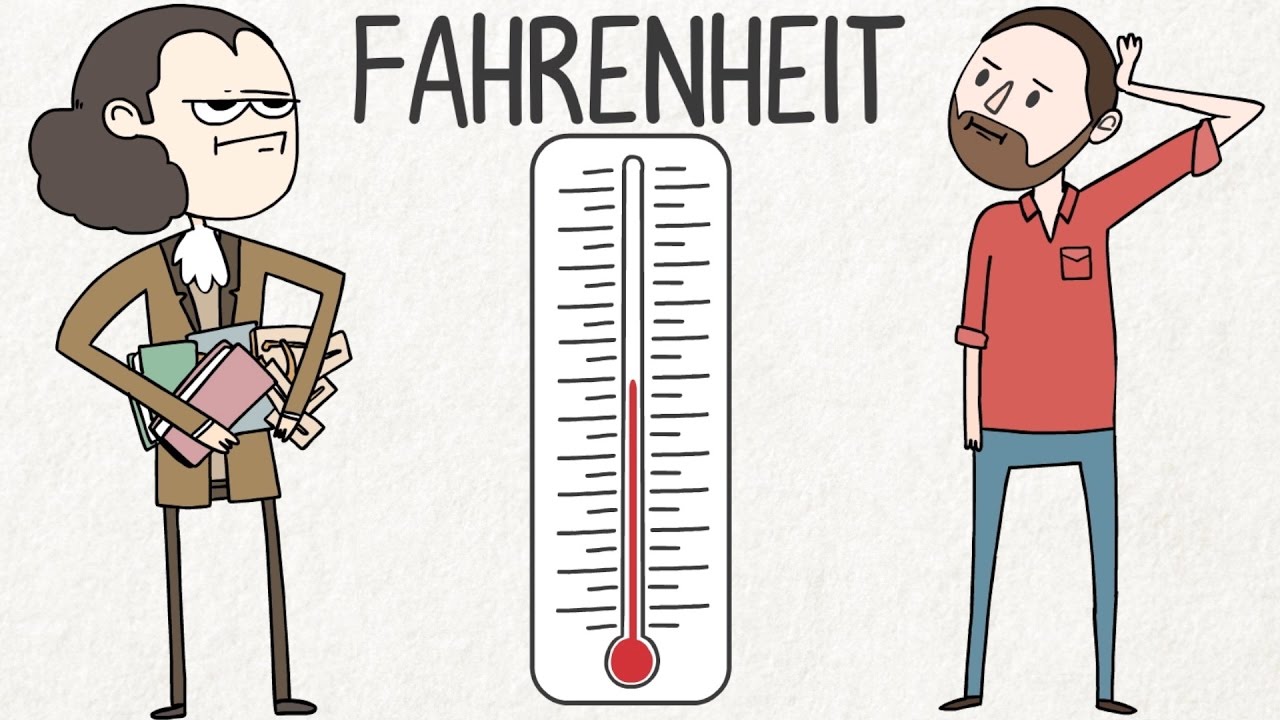What the Fahrenheit?!
The crazy story of the arbitrary temperature scale used in a tiny minority of countries.
Check out Audible: http://bit.ly/AudibleVe
Snatoms are available again! http://www.snatoms.com
Support Veritasium on Patreon: http://bit.ly/VePatreon
Celsius didn’t invent Celsius: http://bit.ly/VeCelsius
Video animated by Marcello Ascani: http://bit.ly/VeMarcello
Thanks to Patreon supporters:
Nathan Hansen, Bryan Baker, Donal Botkin, Tony Fadell, Saeed Alghamdi
Music by Kevin MacLeod: http://incompetech.com “Modern Piano Zeta – Improbable” “Ice Demon” “Divertimento K131” “Sneaky Adventure” “Sheep May Safely Graze” “Professor and the Plant”
References:
A History of the Thermometer and its uses in Meteorology by W. E. Knowles Middleton
Absolute Zero and the Conquest of Cold by Tom Shachtman
The Science of Measurement, A Historical Survey by Herbert Arthur Klein
Lehrbuch der Chemie by Jöns Jakob Berzelius
Script:
As an Australian-Canadian the Fahrenheit temperature scale always seemsed a bit arbitrary. I mean why does water freeze at 32 degrees? And what exactly does zero represent?
According to many sources the Fahrenheit scale was defined by setting zero degrees equal to the temperature of an ice, salt, and water mixture and 100 degrees being roughly equal to human body temperature. But that isn’t true.
The real story is much more interesting, and scientific…
August 14th 1701 was almost certainly the worst day in the life of fifteen year-old Daniel Gabriel Fahrenheit. On that day both of his parents died suddenly from mushroom poisoning. He was sent from Poland, where he lived, to Amsterdam to become an apprentice bookkeeper.
But Fahrenheit couldn’t stand his apprenticeship and ran away so many times his employers put out a warrant for his arrest. Traveling from city to city around Europe, he became fascinated with scientific instruments and in particular thermometers.
In 1708, possibly seeking help with the warrant, Fahrenheit met with the mayor of Copenhagen, who happened to be the famous astronomer Ole Romer.
Romer is known for observing the eclipses of Jupiter’s moons and realizing that variations in the timing of those eclipses was caused by the time it took light to reach Earth. In other words, he found a way to accurately measure the finite speed of light.
But more pertinent to this story, in 1702 Romer was housebound after breaking his leg. To pass the time he devised a new temperature scale with the freezing point of water at 7.5 degrees and body temperature at 22.5 degrees.
This might seem odd until you consider that Romer wanted the boiling point of water to be 60 degrees (as an astronomer, he had experience dividing things by 60). If you take this scale, divide it in half, in half again, and in half once more, you find the freezing point of water 1/8th up the scale, and human body temperature 3/8th up the scale.
So at their meeting in 1708, Fahrenheit learned of Romer’s temperature scale and adopted it as his own, adjusting it slightly because he found it “inconvenient and inelegant on account of the fractional numbers”. So he scaled them up to 8 and 24.
That is the original Fahrenheit scale. He produced thermometers for some time using this scale.
But then, at some later time Fahrenheit multiplied all numbers on his scale by four, setting freezing point to the now familiar 32 and body temperature to 96. It’s unclear exactly why he did this. He may just have wanted finer precision in his measurements but I think there was a better reason.
You see, Fahrenheit was an excellent instrument maker. His thermometers agreed with each other precisely, at a time when that was unheard of. He pioneered the use of mercury as a measuring liquid, which has the benefit of a much higher boiling point than the alcohol used in most other thermometers at the time. For these accomplishments, he was inducted into the British Royal Society.
And we know he read the works of Newton, Boyle, and Hooke, in which he would have come across the idea that a one degree increase in temperature should correspond to a specific fractional increase in the volume of the measuring liquid.
And today a one degree Fahrenheit increase in temperature increases the volume of mercury by exactly one part in 10,000. Is this just a coincidence? We’ll probably never know for sure because as an instrument maker Fahrenheit was secretive about his methods. But I think the data strongly suggests this was the case.
So what exactly did zero represent on the scales of Fahrenheit and Romer? By many accounts it’s the temperature of a salt, ice and water mixture. But there are different descriptions of these mixtures and none of them actually produces the temperature they’re supposed to. More likely I think they picked the coldest temperature in winter, set that as zero and later used ice and brine to calibrate new thermometers. Now his scale is only used regularly in the Cayman Islands, Bahamas, Belize, oh and the United States of America.



![[ID: jvNU5bwzclI] Youtube Automatic](https://bizimtube.com/wp-content/uploads/2021/03/id-jvnu5bwzcli-youtube-automatic-236x133.jpg)
![[ID: 0yCJMt9Mx9c] Youtube Automatic](https://bizimtube.com/wp-content/uploads/2021/03/id-0ycjmt9mx9c-youtube-automatic-236x133.jpg)
![[ID: vAJM5EdDwjU] Youtube Automatic](https://bizimtube.com/wp-content/uploads/2021/03/id-vajm5eddwju-youtube-automatic-236x133.jpg)
![[ID: LxOmofEFub4] Youtube Automatic](https://bizimtube.com/wp-content/uploads/2021/03/id-lxomofefub4-youtube-automatic-236x133.jpg)
![[ID: wFAh77GBsHs] Youtube Automatic](https://bizimtube.com/wp-content/uploads/2021/03/id-wfah77gbshs-youtube-automatic-236x133.jpg)
![[ID: tjwrG4Debc4] Youtube Automatic](https://bizimtube.com/wp-content/uploads/2021/03/id-tjwrg4debc4-youtube-automatic-236x133.jpg)
![[ID: _28bYGZtnU8] Youtube Automatic](https://bizimtube.com/wp-content/uploads/2021/03/id-28bygztnu8-youtube-automatic-236x133.jpg)
![[ID: 1e7bhUjUEJ8] Youtube Automatic](https://bizimtube.com/wp-content/uploads/2021/03/id-1e7bhujuej8-youtube-automatic-236x133.jpg)
![[ID: QjyCviSKY2U] Youtube Automatic](https://bizimtube.com/wp-content/uploads/2021/03/id-qjycvisky2u-youtube-automatic-236x133.jpg)
![[ID: -5i-vB4-kFk] Youtube Automatic](https://bizimtube.com/wp-content/uploads/2021/03/id-5i-vb4-kfk-youtube-automatic-236x133.jpg)
![[ID: covHhQgr5kU] Youtube Automatic](https://bizimtube.com/wp-content/uploads/2021/03/id-covhhqgr5ku-youtube-automatic-236x133.jpg)
![[ID: mX7FEHws43A] Youtube Automatic](https://bizimtube.com/wp-content/uploads/2021/03/id-mx7fehws43a-youtube-automatic-236x133.jpg)